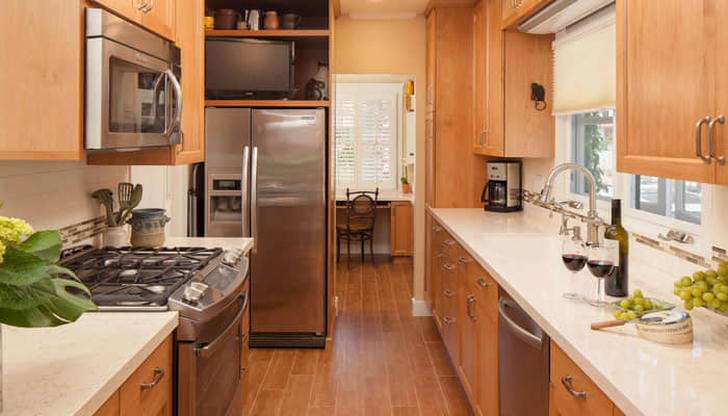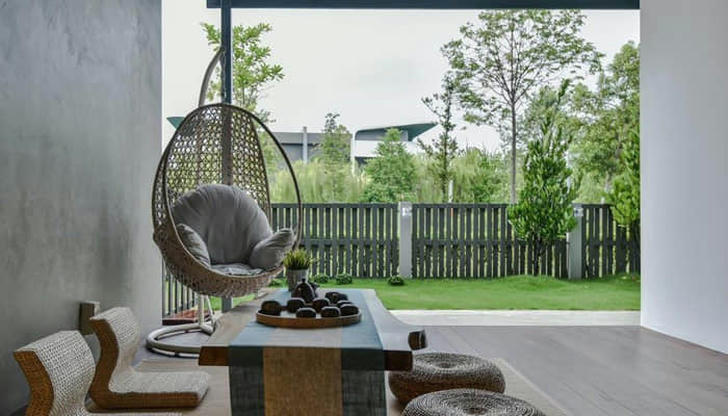10 Home-Wellness Essentials for a Healthy, Happy Life
Your home should be a sanctuary for rest, relaxation, and well-being. While "wellness" is a buzzword we hear often, there are practical steps you can take to make your living space work harder to support your health. Here are 10 key essentials that truly make an impact, such as creating a dark bedroom for better sleep, improving air quality, purifying your water, and carving out space for relaxation.
1. Transform Your Bedroom for Better Sleep

Most people struggle to get the recommended seven to eight hours of sleep each night. If you’re one of them, there are several effective changes you can make to improve your sleep quality.
Install blackout curtains to block out external light sources, like streetlights or car headlights, which can interfere with restful sleep. Eliminate or cover light-pollution sources within your bedroom, such as nightlights, clocks, and baby monitors, to create a darker environment.
Turn off screens like your TV, computer, and smartphone at least an hour before bed, as the blue light they emit can make it harder to fall asleep.
Invest in a high-quality mattress and bedding made from natural fibers like cotton, wool, and linen for a more comfortable and restful sleep.
2. Purify the Air with Houseplants

Adding a few houseplants is a simple yet effective way to improve the air quality in your home. Plants like the snake plant and peace lily are known for their air-purifying abilities. However, some plants, like the peace lily, can be toxic to both humans and pets, so it’s important to ensure you choose pet-safe varieties. For an even bigger impact, why not create a living wall filled with fresh green plants to bring nature indoors and enhance the air you breathe?
3. Invest in an Air Purifier

If you suffer from asthma, allergies, or are concerned about air pollution (including smoke from wildfires), an air purifier can significantly improve indoor air quality by reducing pollutants and allergens. Look for a purifier with a high-efficiency particulate air (HEPA) filter, as it effectively traps tiny particles. Additionally, make sure to check the recommended room size for the unit. If you have a larger space, you may need more than one air purifier to ensure the air stays clean.
4. Try a Part-Time Standing Desk

It’s well-known that sitting for extended periods isn’t great for our health, but research in the journal Ergonomics shows that standing for long stretches can also cause problems. So, what’s the solution? Consider a bilevel work setup. By incorporating a standing desk alongside a traditional desk and chair, you can easily alternate between standing and sitting throughout the day, giving your body the best of both worlds.
5. Switch to Natural Cleaners

While heavy-duty cleaners can be effective, you don’t always need harsh chemicals for everyday cleaning. Many natural cleaning solutions can be made with simple, affordable ingredients like distilled water, white vinegar, Castile soap, and baking soda. These alternatives not only help you breathe easier but can also save you money.
Here are a few easy, natural cleaning recipes to try:
• All-Purpose Cleaner: Mix equal parts vinegar and water in a spray bottle. Use a microfiber cloth to clean windows, mirrors, bathtubs, tiled floors, and more.
• Marble, Granite, and Quartz Cleaner: Fill a 24- to 32-ounce spray bottle with water, add 4 to 5 ounces of rubbing alcohol, six drops of Castile soap, and a few drops of your favorite essential oil (like lavender or rosemary).
• Stainless Steel Polish: After cleaning surfaces with your all-purpose cleaner, lightly spray them with coconut oil cooking spray. Rub in the oil with a clean dish towel or paper towel for a shiny finish.
6. Choose the Right Water Filtration System

If you've been relying on the same water filtration pitcher for years, it might be time to consider an upgrade. In addition to improving your drinking water, you may want to think about installing a filter for your shower head, especially if chlorine in your water is irritating your skin. A good filtration system can help ensure cleaner, healthier water throughout your home.
7. Give Your Kitchen a Wellness Makeover

From major changes, like choosing nontoxic cabinetry, to smaller touches, like keeping fresh herbs and produce within easy reach, the way you design your kitchen can significantly affect your health. Here are some ideas for creating a wellness-focused kitchen:
During a remodel, select cabinetry that is formaldehyde-free and has a low- or zero-VOC finish. Choose flooring made from eco-friendly materials like cork, FSC-certified wood, reclaimed wood, or linoleum.
Grow herbs in a windowsill container garden and display fresh produce in a bowl on the counter to encourage healthy eating. Store healthy bulk items in clear glass containers so you can easily see them and remember to incorporate them into your meals.
8. Ensure the Right Amount of Light

Getting enough sunlight during the day is crucial for maintaining good health and preventing vitamin D deficiency, especially if you spend a lot of time indoors. Increasing natural light in your home through well-placed windows and skylights is an effective way to make sure you're getting enough.
At night, it's just as important to create a dark environment in your bedroom. Excessive light exposure — including from screens — can interfere with sleep, as noted by the American Medical Association. Use quality bedroom shades to block out light and turn off electronic devices at least an hour before bedtime to help promote restful sleep.
9. Create a Relaxation Zone

Everyone can benefit from having a designated space for relaxation, whether it's for practicing yoga, meditating, or simply enjoying a few moments of peace. Here are some tips for carving out your own personal retreat:
Choose a quiet spot that’s away from the busy areas of your home. This could be an attic, a cozy corner of your bedroom, or even your master bathroom.
Keep the space minimalist and clutter-free. Include only what you need for relaxation: a comfortable seat or floor mat, soft lighting, and maybe some soothing music or a healthy green plant.
If you share your home, create a signal or sign to let others know when you'd like some uninterrupted time in your relaxation space.
10. Design a Peaceful Outdoor Space

In his book The Art of Simple Living, Zen monk Shunmyo Masuno emphasizes how small changes can greatly enhance our sense of happiness and tranquility. One of his suggestions is to create a space where you can connect with nature. This could be anything from a beautifully tended Zen garden to a container garden with a peaceful fountain on an apartment balcony, or even just a few potted plants on a windowsill with a cozy seat to enjoy the view. The size of the space doesn’t matter — what’s important is allowing yourself the time and mental space to simply be present and unwind.
